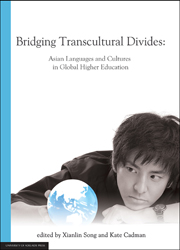Book contents
- Frontmatter
- Contents
- Acknowledgements
- List of Contributors
- Foreword
- Part I Another pedagogy is possible
- Part II Re-locating teaching and learning
- Part III Transforming curriculum in Asian language teaching
- 4 Teaching Asian languages from an intercultural perspective: Building bridges for and with students of Indonesian
- 5 A Study Skills Action Plan: Integrating self-regulated learning in a diverse higher education context
- 6 The challenge of motivation: Teaching Japanese kanji characters to students from diverse language backgrounds
- 7 Personal growth through intercultural communication: Engaging native speakers and reflective learning in Japanese language curriculum
- Part IV Capitalising on Asian social and cultural studies in contexts of diversity
- Part V Bridging learning gaps
7 - Personal growth through intercultural communication: Engaging native speakers and reflective learning in Japanese language curriculum
from Part III - Transforming curriculum in Asian language teaching
Published online by Cambridge University Press: 05 June 2013
- Frontmatter
- Contents
- Acknowledgements
- List of Contributors
- Foreword
- Part I Another pedagogy is possible
- Part II Re-locating teaching and learning
- Part III Transforming curriculum in Asian language teaching
- 4 Teaching Asian languages from an intercultural perspective: Building bridges for and with students of Indonesian
- 5 A Study Skills Action Plan: Integrating self-regulated learning in a diverse higher education context
- 6 The challenge of motivation: Teaching Japanese kanji characters to students from diverse language backgrounds
- 7 Personal growth through intercultural communication: Engaging native speakers and reflective learning in Japanese language curriculum
- Part IV Capitalising on Asian social and cultural studies in contexts of diversity
- Part V Bridging learning gaps
Summary
Introduction
The communicative language teaching (CLT) approach has been used in foreign language classes to meet many learners’ primary goals, as the development of speaking ability is the one of the key areas of achievement for those learning a language. With this approach teachers emphasise authentic interaction, conversation and language use as much as they can, as distinct from just focussing on learning about the language (Lightbown & Spada 1993). In the past, traditional foreign language teaching had focused primarily on knowledge of the language as a code, whereas the CLT approach is based on performance rather than linguistic knowledge. Student-to student interaction in pairs and small groups working on student-centred activities are common practice in this approach. Nevertheless, it is usually the case that students are unable to use the language in realistic interaction as their oral communication skills are at relatively low levels. To address this issue, and for students to be able to use the language authentically, foreign language courses in Australian universities promote study abroad programs as one of the best ways to study the target language in the target community. Language students are encouraged to visit the country of their target language and immerse themselves in the language and culture. However, the unfortunate fact is that only limited numbers of students can take advantage of such opportunities. Thus, we as teachers are challenged to create activities and resources in order to provide our students with realistic opportunities to experience the target language and culture within Australia.
- Type
- Chapter
- Information
- Bridging Transcultural DividesAsian Languages and Cultures in Global Higher Education, pp. 155 - 188Publisher: The University of Adelaide PressPrint publication year: 2012

